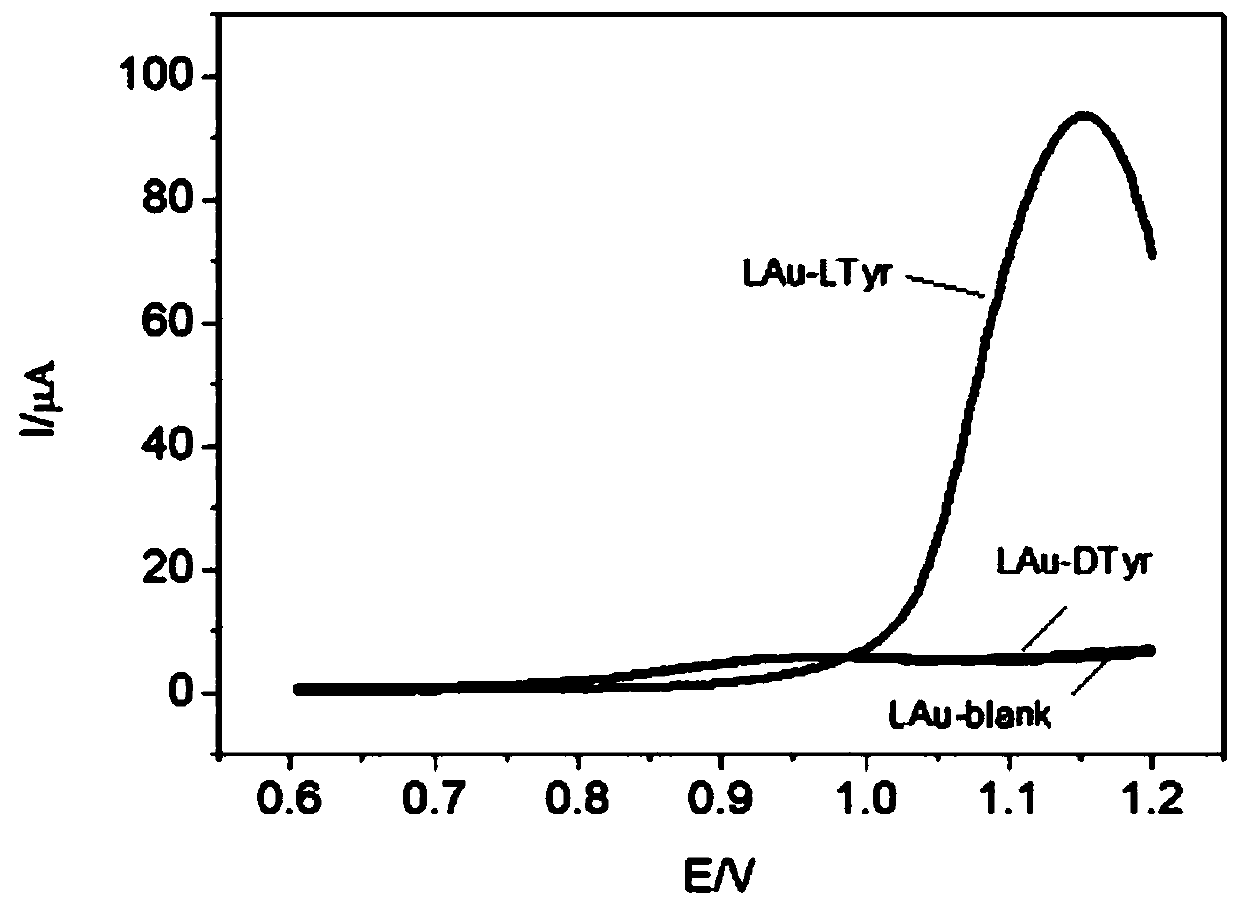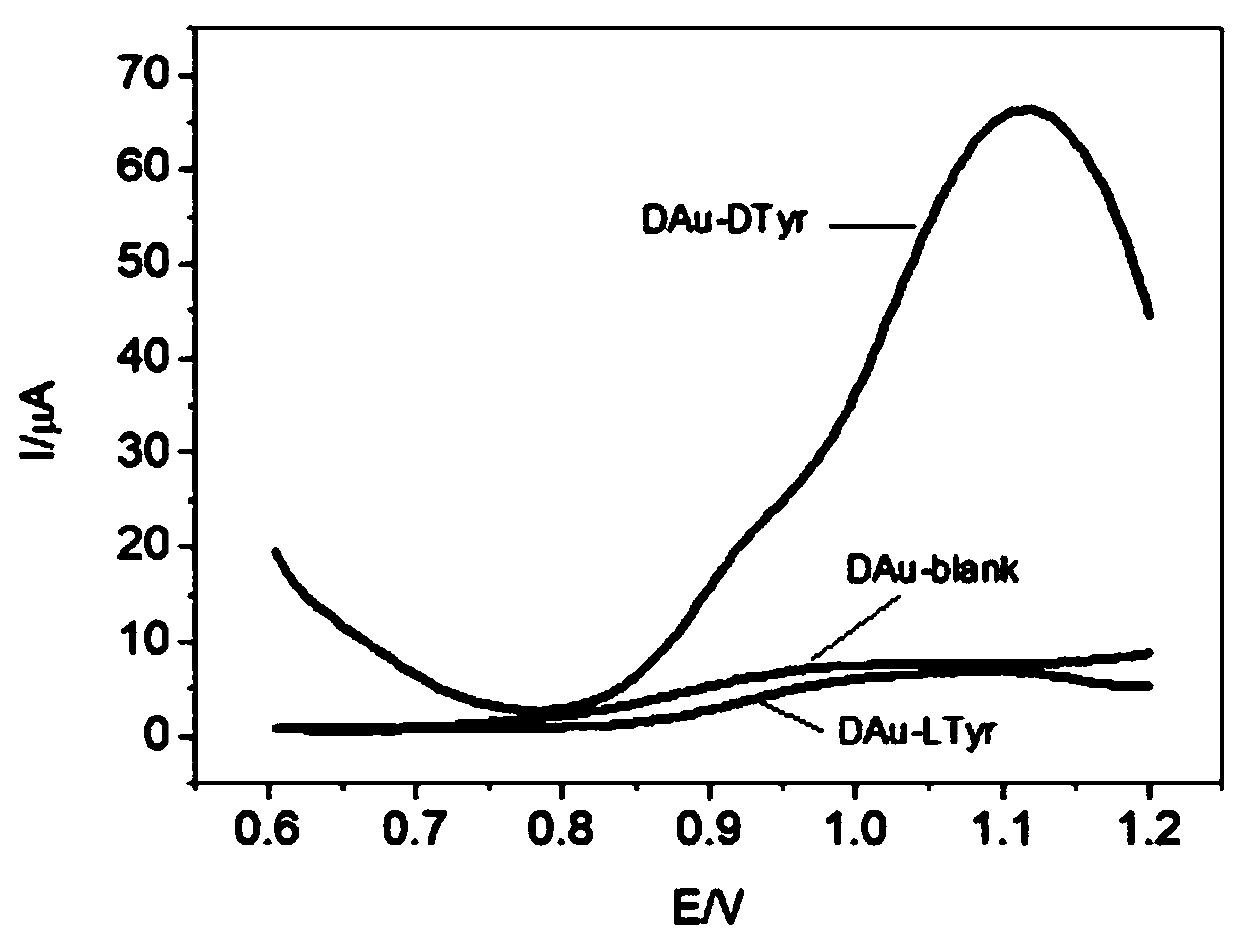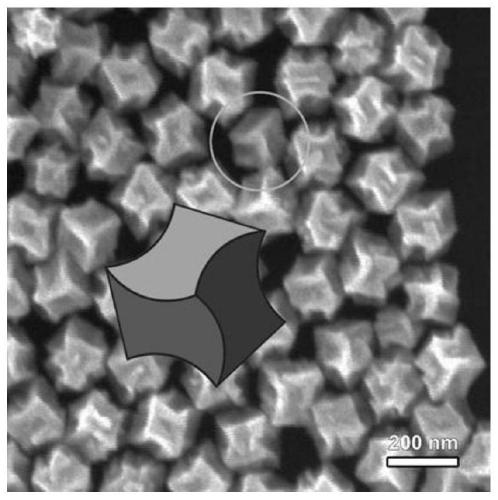Chiral electrochemical sensor and application thereof
An electrochemical and sensor technology, applied in the field of chiral electrochemical sensors, can solve the problems of short service life, poor enantiomeric discrimination ability, and incomplete discrimination, and achieve high sensitivity, long service life, and high discrimination. Effect
- Summary
- Abstract
- Description
- Claims
- Application Information
AI Technical Summary
Problems solved by technology
Method used
Image
Examples
preparation example Construction
[0034] The preparation process of the chiral electrochemical sensor of the present invention is as follows:
[0035] Design and synthesis of high-index noble metal nanocrystals with intrinsic chirality:
[0036] (1) Prepare cetylpyridinium chloride (CPC)-protected Au cube, octahedron, and dodecahedron seeds using the method previously proposed by our research group. The general process is to first synthesize CTAB-protected 1.5nm seeds by sodium borohydride reduction method Gold seeds; on this basis, with the assistance of silver ions, AA was reduced to synthesize gold nanorods; after the secondary growth of gold nanorods, chloroauric acid was added to oxidize and corrode them into gold seeds protected by CPC. Gold seeds protected by CPC can be grown into Au cube, octahedron, and dodecahedron seeds by regulating the growth kinetics and thermodynamics under the protection of CPC.
[0037] (2) According to literature [Lee, H.-E., Ahn, H.-Y., Mun, J., Lee, Y.Y., Kim, M., Cho, N.H...
Embodiment 1
[0040] Example 1: Preparation of cubic Au seeds: 1.5nm gold seeds protected by CTAB were synthesized by sodium borohydride reduction at 30°C; with the assistance of silver ions, CTAB was used as a protective agent, and the weak reducing agent AA was reduced to form gold nanorods; After the secondary growth of gold nanorods, chloroauric acid is added to oxidize and corrode them into gold seeds protected by CPC; CPC is used as a protective agent, and the crystal face inducer Br - , CPC-protected gold seeds, and AA as a reducing agent to finally obtain CPC-protected gold cube seeds.
[0041] Preparation of cysteine-induced intrinsic chiral gold nanocrystals: Add 0.8mL 100mMCTAB and 0.2mL 10mM HAuCl to 3.95mL water successively 4 , 0.475mL 100mM AA as a reducing agent, 50μL cubic CPC gold seeds, incubated for 5min, added 50μL 10μM L-cysteine, and grown at 30°C for 2h. prepared as image 3 Medium helical chiral gold nanoparticles.
[0042] Preparation of intrinsic chiral electro...
Embodiment 2
[0043] Example 2: Preparation of cubic Au seeds: 1.5nm gold seeds protected by CTAB were synthesized by sodium borohydride reduction at 30°C; with the assistance of silver ions, CTAB was used as a protective agent, and the weak reducing agent AA was reduced to form gold nanorods; After the secondary growth of gold nanorods, chloroauric acid is added to oxidize and corrode them into gold seeds protected by CPC; CPC is used as a protective agent, and the crystal face inducer Br - , CPC-protected gold seeds, and AA as a reducing agent to finally obtain CPC-protected gold cube seeds.
[0044] Preparation of cysteine-induced intrinsic chiral gold nanocrystals: Add 0.8mL 100mMCTAB and 0.2mL 10mM HAuCl to 3.95mL water successively 4 , 0.475mL 100mM AA as a reducing agent, 100μL cubic CPC gold seeds, incubated for 5min, added 50μL 10μM D-cysteine, and grown at 30°C for 2h. prepared as Figure 4 Right-handed chiral gold nanoparticles.
[0045] Preparation of intrinsic chiral electro...
PUM
 Login to View More
Login to View More Abstract
Description
Claims
Application Information
 Login to View More
Login to View More - R&D
- Intellectual Property
- Life Sciences
- Materials
- Tech Scout
- Unparalleled Data Quality
- Higher Quality Content
- 60% Fewer Hallucinations
Browse by: Latest US Patents, China's latest patents, Technical Efficacy Thesaurus, Application Domain, Technology Topic, Popular Technical Reports.
© 2025 PatSnap. All rights reserved.Legal|Privacy policy|Modern Slavery Act Transparency Statement|Sitemap|About US| Contact US: help@patsnap.com



